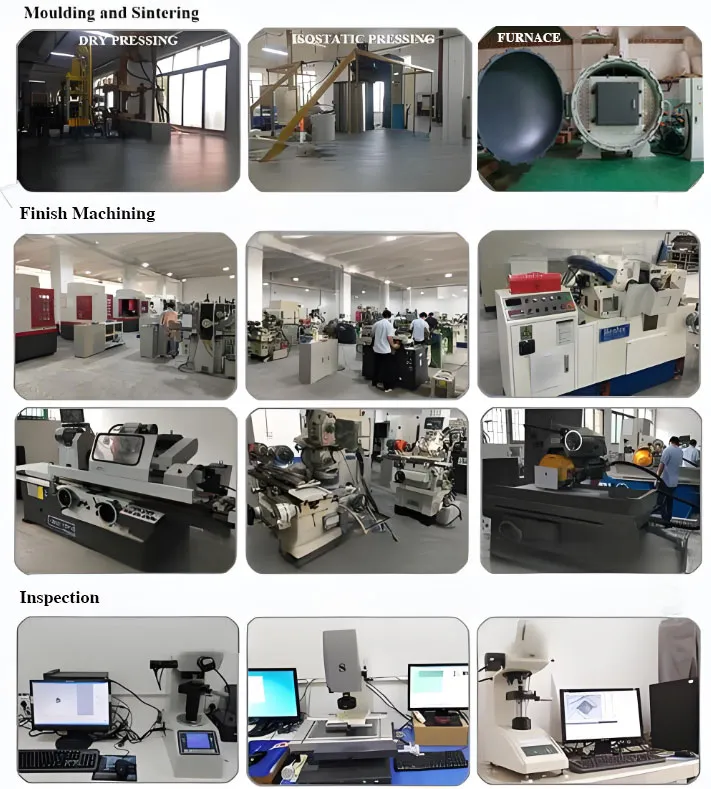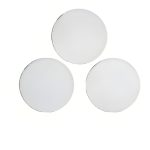Discover Premium Ceramic Products | Durability & Elegance United | Advanced Ceramics
1. Introduction
Silicon carbide crucibles are workhorses in foundries, labs, and metal casting operations thanks to their exceptional thermal conductivity, resistance to thermal shock, and ability to withstand temperatures over 1600°C. But even the toughest silicon carbide crucible can fail prematurely if mishandled. Whether you’re melting aluminum, copper, or precious metals, knowing how to properly use and care for your crucible is essential.

In this guide, we’ll walk you through everything you need to know—from initial seasoning to daily maintenance—and address common pitfalls. We’ll also touch on related silicon carbide products like silicon carbide ceramic tiles, tubes, and even silicon carbide ceramic dinnerware, so you understand the broader material context.
2. Preparing Your Silicon Carbide Crucible for First Use
New silicon carbide crucibles often come with residual dust or manufacturing residues. Before your first melt, clean the crucible gently with a soft brush—never use water or solvents, as moisture can cause cracks during heating.
Next, perform a gradual preheating or ‘seasoning’ cycle:
- Place the empty crucible in a cold furnace or kiln.
- Heat slowly to 200–300°C and hold for 30–60 minutes to drive off any moisture.
- Gradually increase temperature to 800–1000°C over 2–3 hours.
- Allow it to cool naturally before use.
This process helps prevent thermal shock and extends the crucible’s service life significantly.
3. Safe Heating and Melting Practices
Always heat your silicon carbide crucible gradually. Rapid temperature changes are the #1 cause of cracking. Never add cold metal to a hot crucible—preheat the charge material whenever possible.
Use clean, dry charge materials. Contaminants like moisture, oil, or oxides can react with the crucible lining or cause spitting and splashing.

Avoid overfilling. Fill only to 75–80% capacity to allow room for expansion and safe stirring.
When using burners, ensure even flame distribution. Uneven heating can create hot spots that weaken the crucible structure. If you’re using silicon carbide burner nozzles, make sure they’re aligned correctly for uniform heat.
4. Common Problems and How to Fix Them
Crucibles can develop issues over time. Here’s how to troubleshoot the most frequent ones:
- Cracking or chipping: Usually caused by thermal shock. Always preheat slowly and avoid sudden cooling (e.g., don’t quench a hot crucible in water).
- Glazing or slag buildup: Metal oxides can fuse to the inner wall. After cooling, gently chip away residue with a non-metallic scraper. Avoid aggressive tools that scratch the surface.
- Reduced lifespan: May indicate improper use or low-quality material. Ensure you’re using a genuine silicon carbide crucible—not a lower-grade alternative.
If you’re comparing materials, note that boron carbide vs silicon carbide offers higher hardness but lower thermal shock resistance—making silicon carbide better suited for repeated heating cycles.
5. Cleaning and Storage Tips
After each use, let the crucible cool completely in the furnace or on a heat-resistant surface. Never place it on a cold metal table or concrete floor.

Remove solidified metal or slag carefully. A light tap with a wooden mallet can help dislodge stubborn material.
Store in a dry, covered area. Moisture absorption—even from humid air—can lead to steam explosions during reheating.
For long-term storage, consider placing the crucible upside down to prevent dust or debris accumulation inside.
6. Understanding Related Silicon Carbide Products
While your focus may be on the crucible, it’s helpful to know how silicon carbide is used elsewhere. For example:
- Silicon carbide ceramic tubes (like silicon carbide thermocouple protection tubes or silicon carbide ceramic tube for furnace) share similar thermal properties and require comparable care.
- RBSiC silicon carbide tile blocks and silicon carbide bricks are used in furnace linings and benefit from the same slow-heating protocols.
- Even consumer items like silicon carbide ceramic baking dishes, silicon carbide ceramic dinner plates, or silicon carbide ceramic serving bowls leverage the material’s heat retention—but these are typically lower-purity grades meant for kitchen use, not industrial melting.
Don’t confuse silicon carbide with silicon nitride. While both are advanced ceramics, silicon nitride crucibles (from a silicon nitride crucible factory) offer better oxidation resistance but are more expensive and less conductive. Products like custom silicon nitride heat shields or silicon nitride plates serve different niches.
7. When to Replace Your Crucible
Even with perfect care, all crucibles wear out. Replace yours if you notice:
- Deep cracks or structural deformation
- Significant thinning of walls
- Frequent metal contamination or inconsistent melting performance
Using a damaged crucible risks catastrophic failure—potentially causing spills, equipment damage, or injury.
8. Conclusion
A silicon carbide crucible is a high-performance tool that delivers excellent results when treated with respect. By following proper preheating, handling, and cleaning procedures, you’ll get more melts per crucible and safer operations overall. Remember: slow and steady wins the race—especially when temperatures soar above 1000°C. Whether you’re working with industrial components like silicon carbide discs or kitchenware like a silicon carbide ceramic casserole dish, the core principles of thermal management remain the same.
Our Website founded on October 17, 2012, is a high-tech enterprise committed to the research and development, production, processing, sales and technical services of ceramic relative materials such as How. Our products includes but not limited to Boron Carbide Ceramic Products, Boron Nitride Ceramic Products, Silicon Carbide Ceramic Products, Silicon Nitride Ceramic Products, Zirconium Dioxide Ceramic Products, etc. If you are interested, please feel free to contact us.

